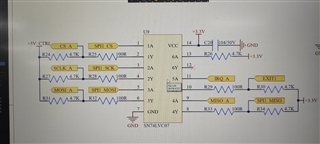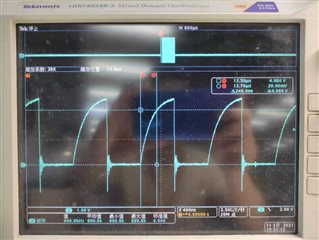Other Parts Discussed in Thread: SN74LVC1G07, SN74AHCT125, SN74LVC2G34
Hi Team,
We are using SN74LVC07A and configure as SPI level shift, schematic shows as below. VCC is 3.3V and using 5V pull up power at output side.

we set the data rate to 1MHz but find the waveform seems distortion, we remove all output components except pull up resistors but seems nothing change. Is it normal here?
I also notice datasheet section 9.2.2 mention Δt/ΔV but doesn't find any description in Recommended Operating Conditions, could you help to offer here? thanks.


Best Regards.
Wiky

